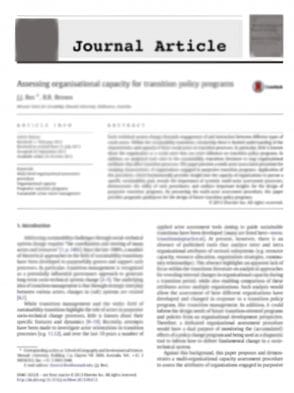The relationship between housing and heatwave resilience in older people
Abstract
Older people have justifiably been highlighted as a high-risk group with respect to heat wave mortality and morbidity. However, there are older people living within the community who have developed adaptive and resilient environments around their home that provide some protection during periods of extreme heat. This study investigated the housing stock and self-reported thermal comfort of a group of older people living in a regional town in Australia during the summer of 2012. The results indicated that daily maximum living room temperature was not significantly correlated with outdoor temperature, and daily minimum living room temperature was very weakly correlated with outdoor temperature. Residents reported feeling comfortable when indoor temperature approximated 26 °C. As living room temperature increased, indoor thermal comfort decreased. Significant differences between indoor temperatures were noted for homes that were related to house characteristics such as the age of the house, the number of air-conditioning units, the pitch of the roof, home insulation and the number of heat-mitigation modifications made to the home. Brick veneer homes showed smaller diurnal changes in temperature than other building materials. With population ageing and the increasing focus on older people living in the community, the quality of the housing stock available to them will influence their risk of heat exposure during extreme weather.
